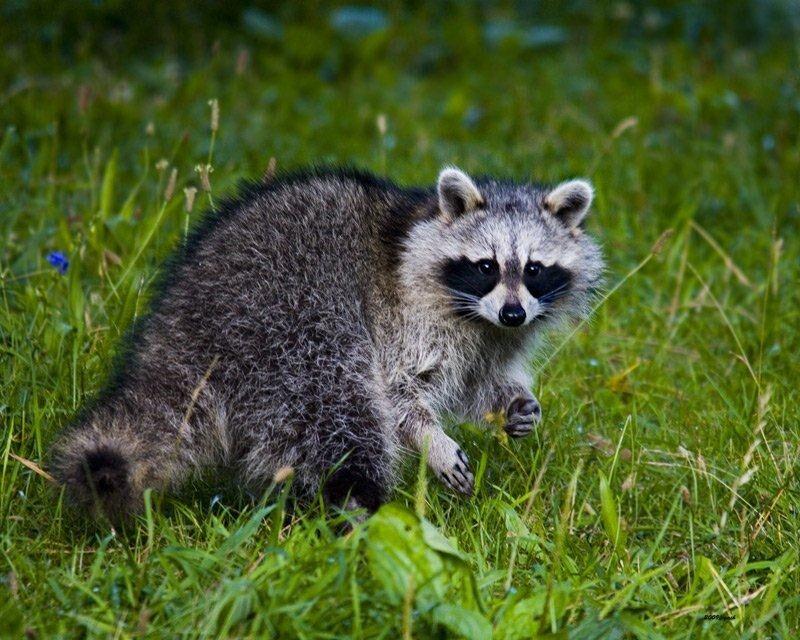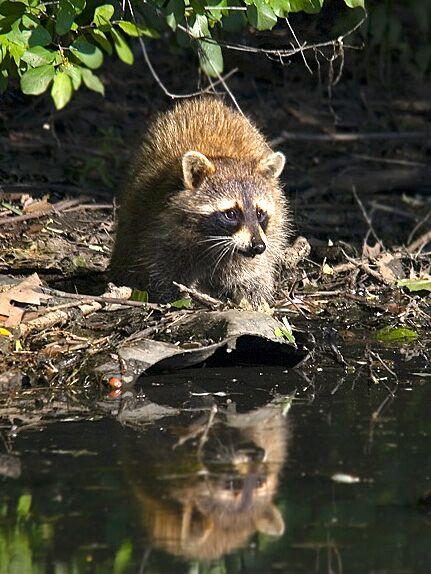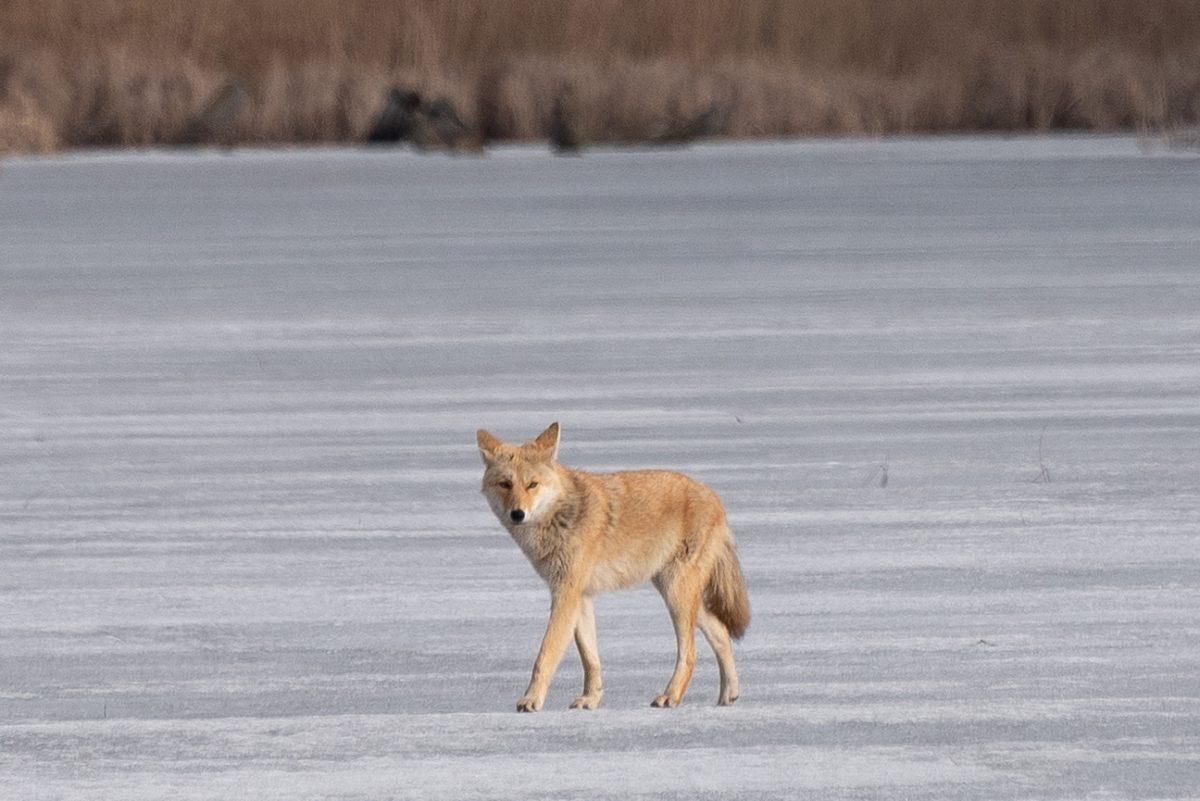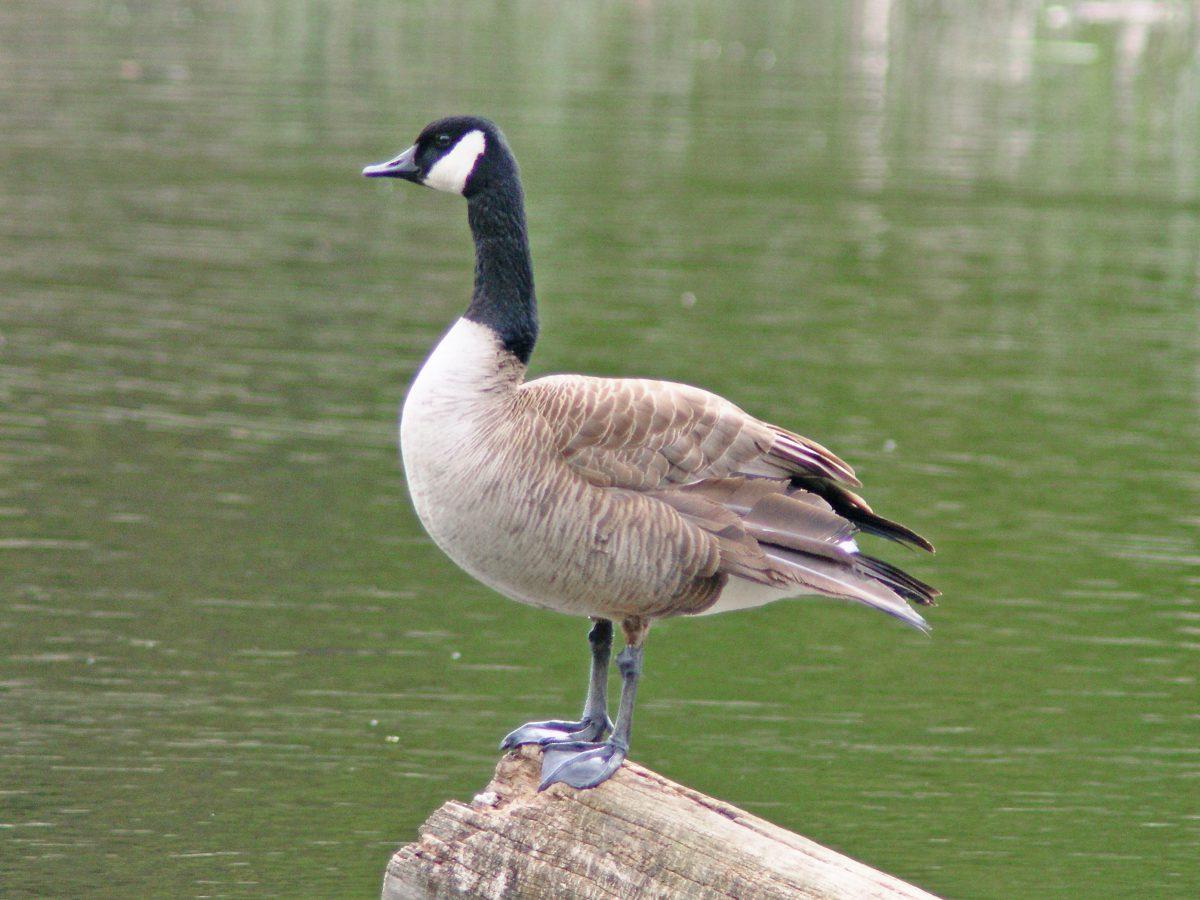by Barbi Lazarus
The raccoon, Procyon lotor, is a perfect example of an opportunistic species. While originally forest dwellers, raccoons have demonstrated that they can not only survive, but thrive in urban areas. In fact, this species now reaches its densest populations in urban areas.
Habitat
While the original habitat of raccoons was deciduous and mixed forest, they have made themselves at home in residential areas. They make use of holes such as sewer pipes, culverts and drainage pipes to travel from one place to another, such as from a marsh to a woodlot. These urban structures help them avoid the dangerous use of roads.
Their den sites include hollow trees, groundhog dens, chimneys, garages, and under or inside sheds and decks. There’s just no telling where you will find a raccoon!
Omnivorous Eaters
Not only their habitat but also their diet has great breadth. In fact, raccoons have the most diverse diet of any carnivore. For example, they feed on grubs, insects, small rodents and other small animals, eggs, fleshy fruits (like grapes), nuts and vegetables (like corn). They will also eat from garbage and composts, having easier access to this human refuse than some other mammals because of their size and climbing abilities that allow them to enter trash cans and dumpsters.
Of course, their amazing and unique ability to use their front paws as human hands to pry things open, turn knobs and handle objects certainly helps as well! They are also noted for having very high intelligence.
Breeding
Raccoons breed in late winter and early spring. The females are monogamous. Young are born in May. The distinctive face mask develops in the first ten days of life. The family can range from 3 to 7 offspring. They will remain in the den until they are about 8 weeks old and then they will leave the den to hunt with their mother. They will grow and fatten up in the summer and autumn. The female and the offspring will stay together for about a year and the mother teaches them to hunt, climb and swim. Males do not participate in child-rearing.
Winter
Raccoons conserve energy by denning and remaining inactive during the coldest months of winter or when snow is deep. This is not hibernation, but rather an extended period of rest and sleep called “torpor”. They may occasional emerge on warm days. The family unit, excluding the male, may den together for the first winter.
Predators and Threats
Raccoons' predators include coyotes, foxes and great horned owls. Malnutrition and harsh winters are a major source of death, as are collisions with automobiles. Many also die from canine distemper (see below).
Raccoons were formerly a carrier of rabies; however, this has been eliminated by the Province through the use of vaccine baits, trap-vaccinate-release programs, and point of infection control programs. No cases of rabies have been reported since late 2005.
Threats to Humans
Raccoons carry a roundworm parasite that it is harmful to humans if ingested. Children who place dirt in their mouth are especially vulnerable to this parasite.
Avoid feeding raccoons as this encourages familiarity with humans that may lead to confrontations. Dogs should be kept on leash in all areas except those designated as off leash. Avoid contact with raccoon feces.
Sources
- Garber, Steven D. 1987. Urban Naturalist. Wiley and Sons Inc., Canada.
- Gehrt, Stanlet D. 2004. Ecology and Management of Striped Skunks, Raccoons and Coyotes in Urban Landscapes. People and Predators: From Conflict to Co-Existence. Eds. Nina Fascione, Aimee Delach and Martin E. Smith. Defenders of Wildlife Island Press, Washington.
- Gehrt, S.D. 2003. Raccoons. Wild Mammals of North America: Biological Management and Conservation. Eds. G.A Fledhamer., B.C Thompson, J.A Chapman. Johns Hopkins University Press, Baltimore. 611-634.
- Rosatte, R.C, Power, M.J and MacInnes, C.D. 1991. Ecology of Urban Skunks, Raccoons and Foxes in Metropolitan Toronto. Wildlife Conservation in Metropolitan Environments. Eds. L.W Adams, D.L Leedy. National Institute for Urban Wildlife, Maryland. 31-38.
- Ditchkoff, Stephen S., Saalfeld, Sarah T. and Gibson, Charles J. 2006. Animal Behaviour in Urban Ecosystems: Modifications Due to Human-Induced Stress. Urban Ecosystems. Volume 9: 5-12.
See also
- Mammals of Toronto's High Park
- Toronto Animal Services: Raccoons






















